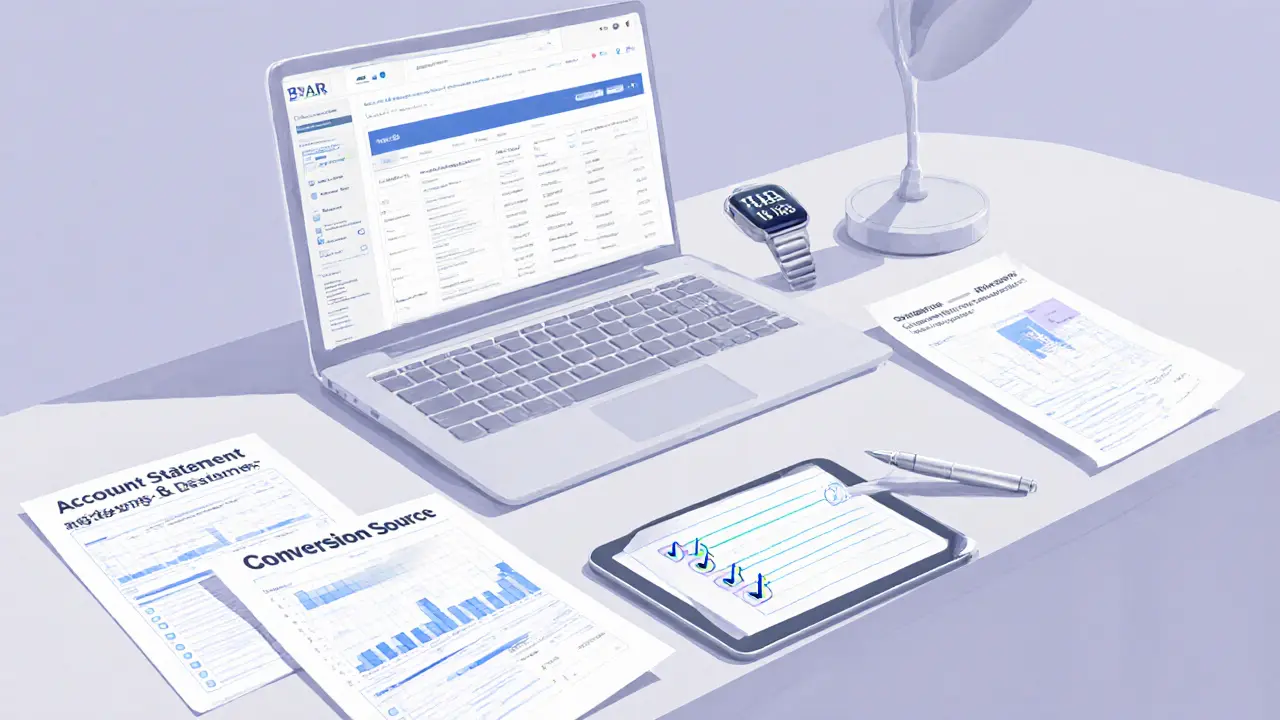FBAR Penalty Calculator
Calculate Your Potential FBAR Penalty
Enter your foreign crypto account value to see the penalty you might face for missing an FBAR filing.
Penalty Results
Enter your account value and violation type to see the penalty calculation.
FBAR (FinCEN Form 114) is the annual report that U.S. persons must submit to disclose foreign financial accounts exceeding $10,000 at any point during the year. Administered by the Financial Crimes Enforcement Network (FinCEN) of the U.S. Treasury, the FBAR has traditionally covered bank, securities, and insurance accounts. In 2023 FinCEN signaled that cryptocurrency held on foreign exchanges will soon be treated the same way, meaning a missed filing can trigger penalties up to $100,000 per violation.
Why Crypto Accounts Now Fall Under FBAR
The original Bank Secrecy Act of 1970 never mentioned virtual currency because it didn’t exist. A 2023 rulemaking notice proposed amending the act to explicitly include "virtual currency" when the aggregate value exceeds the $10,000 threshold. The IRS has already updated its guidance, stating that U.S. citizens, green‑card holders, and certain entities must report foreign crypto holdings just like traditional accounts.
Who Must Report
- U.S. citizens and residents.
- Green‑card holders and lawful permanent residents.
- U.S. corporations, partnerships, and certain trusts.
- Any individual with a foreign crypto‑exchange account that reached $10,000 in value during the calendar year.
If you meet any of these criteria, you are required to complete the crypto FBAR filing by the April 15 deadline (with automatic extension to October 15).
What Information the FBAR Demands for Crypto
Even though the asset class is new, the required fields mirror those for a regular bank account:
- Account holder’s name and taxpayer identification number.
- Account number or other unique identifier assigned by the exchange.
- Legal name and physical address of the foreign exchange (e.g., Binance Europe, Kraken EU).
- Account type - labeled as a "virtual currency" account.
- Maximum value of the account in U.S. dollars during the year, using a reputable month‑end exchange rate.
The IRS requires a "reliable exchange rate" from a reputable source such as CoinMarketCap, Bloomberg, or a major exchange’s public API, as outlined in Revenue Ruling 2019‑24.

Penalty Landscape: From ,000 to 0,000
| Violation Type | Penalty per Report (2025) | Key Factors |
|---|---|---|
| Non‑willful (unintentional) | $16,536 | Reasonable cause, lack of knowledge, first‑time error. |
| Willful (intentional) | $100,000 or 50 % of the highest account value (whichever is greater) | Deliberate concealment, false statements, repeated failures. |
Notice the stark jump: a willful omission can double the base penalty and then be multiplied by half the account balance. For a $30,000 Binance EU holding, the maximum will hit $100,000, far exceeding the $15,000 that would result from a non‑willful slip.
Common Mistakes That Lead to $100,000 Penalties
Six recurring errors have been flagged by tax‑tech firms like Bitwave.io:
- Not filing at all because the taxpayer believes crypto isn’t a “financial account.”
- Counting only U.S.‑based exchanges and ignoring foreign subsidiaries.
- Using a single day’s price instead of the maximum yearly balance.
- Failing to attach supporting screenshots and transaction logs.
- Submitting a paper FBAR - electronic filing is mandatory.
- Waiting until the October extension without confirming the final balance.
Each mistake can be interpreted as willful if the IRS shows a pattern of avoidance, especially after the 2024 enforcement push.
Step‑by‑Step Guide to a Correct Crypto FBAR
- Identify every foreign crypto exchange you’ve used in the tax year (e.g., Binance EU, Kraken EU, Coinbase International).
- Download a month‑end balance report for each month. Most exchanges let you export CSV files.
- Convert each month‑end balance to USD using a reputable source; record the highest figure.
- Collect documentation: account statements, screenshots of the dashboard showing the exchange’s legal address, and the conversion source.
- Log into the BSA E‑Filing System, select FinCEN Form 114, and fill out the required fields.
- Enter the exchange’s name and jurisdiction (e.g., “Binance Europe - Malta”).
- Use the exchange‑assigned account number or a clear identifier.
- Report the maximum USD value you calculated.
- Submit the FBAR electronically before April 15 (or the automatic extension deadline of October 15).
- Keep a copy of the confirmation receipt and all supporting docs for at least five years.
Following this checklist reduces the odds that the IRS will deem the omission willful.

When to Seek Professional Help
Crypto FBAR preparation can take 8-12 hours per taxpayer, according to the AICPA’s 2024 survey. If you have multiple exchanges, high‑frequency trading, or mixed fiat‑crypto holdings, a qualified CPA-especially one familiar with cryptocurrency tax law-can save you both time and potential penalties. Rates range from $350 to $600 per hour, but automated services like CoinLedger (starting at $99 / year) can handle the filing for simpler portfolios.
Future Outlook: Regulations Are Tightening
FinCEN expects final rules on virtual currency FBAR reporting by Q4 2024. The IRS’s Large Business & International division has labeled crypto a “high‑risk compliance area,” and the Treasury’s Common Reporting Standard will integrate exchange data by 2025. In practice, that means the government will receive a feed of your foreign balances directly from the exchange-no more relying on self‑disclosure alone.
Bottom Line - Avoid the $100,000 Trap
If you hold any foreign crypto worth more than $10,000 at any time, filing the FBAR is non‑negotiable. The cost of an amendment, reasonable‑cause statement, and a $16,536 fine is tiny compared with a $100,000 willful penalty. Keep accurate records, use a reliable conversion source, and file on time. When in doubt, pull in a crypto‑savvy tax professional before the deadline.
Do I need to file an FBAR for a foreign crypto exchange if my balance never exceeded $10,000?
No. The FBAR filing requirement triggers only when the aggregate value of all foreign accounts-crypto or traditional-exceeds $10,000 at any point during the year.
Can I file the FBAR retroactively if I missed a year?
Yes. You can submit a delinquent FBAR using the BSA E‑Filing System and include a reasonable‑cause statement. Expect a non‑willful penalty unless the IRS determines willful intent.
Which exchanges count as “foreign” for FBAR purposes?
Any exchange whose legal entity is organized outside the United States. Examples include Binance Europe (Malta), Kraken EU (Estonia), and Coinbase International (Ireland). U.S. subsidiaries of these platforms are not considered foreign.
How do I value my crypto for the FBAR?
Use the highest month‑end USD value of the account during the year, applying an exchange rate from a reputable source (e.g., CoinMarketCap, Bloomberg). Document the source and date for each conversion.
What’s the difference between a non‑willful and willful FBAR penalty?
Non‑willful penalties are capped at $16,536 per violation and apply when the failure is due to oversight or lack of knowledge. Willful penalties can reach $100,000 or 50 % of the highest account balance, and they require proof that the taxpayer deliberately concealed the account.

